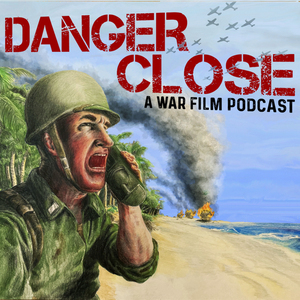Richard Stephens
Minor on History, focusing on military history
The Imitation Game
The film primarily focuses on Alan Turing’s exploits during WWII as part of the Allied effort to break
Germany’s codes; interspersed with aspects of his childhood and life after the war. My research will
focus on the historical event that was breaking the Nazi Enigma code.
That being said, and I’m sure the group will discuss this at length, the tragedy of his life must be
discussed. Persecuted as a homosexual in Britain after the war, he may have committed suicide (it is
unclear whether his death by cyanide was intentional or accidental.) He was a unique mind of his time
who died in 1954 at the age of 43. One can’t help but wonder what else he could have contributed to
society had he been given more time on earth.
Trivia
The name of the film takes its title from the Turing Test (originally called The Imitation Game in a paper
written by Alan Turing himself.) Now the Imitation Game is considered a subset of a specific type of
Turing Test.
Talking Points
Enigma - During WWII, Germany used Enigma machines to encode and decipher communications.
These machines were quite complex analog computers that substituted a letter type for a new letter
automatically. The genius of the design allowed up to 13 direct substitutions (using a plug board in the
front) and as a key is pressed, a lamp lights up on the display above the keys with the coded letter. As
this happens, a series of rotors (between 3 and 8, depending on the version) will rotate and change the
output letter with each key press. So for example, I press the “A” key and the machine encodes it to
“Q”. I press “A” again, and it encodes to “Z” and so on and so on.
To decode a message encrypted by Enigma, a corresponding enigma machine will have to be set with
the correct rotors (in order) and rotor starting positions and plug board setting. Thus, even if an Enigma
was captured by the enemy – as happened in May, 1941 when a British destroyer (the Bulldog) was able
to capture a German U-Boat (U-110) with Enigma intact – it was useless long term without up-to-date
codebooks detailing the settings (which changed daily.)
Polish cryptanalysts began working on cracking Enigma in the pre-war years. Commercial Enigma
machined were available, and a lot of progress was made. Polish analysts discovered that the military
wiring was different than the commercial wiring (alphabetical as opposed to a standard keyboard
layout) and built so called “Enigma Doubles.” They were able to crack the three-wheel Enigma using
brute force techniques to run through possible combinations. However, this was only possible due to
how the Enigma was being used at the time – a single indicator setting was used for all traffic on a
network in a day, and the rotor order was only changed quarterly. By the start of the war, Germany had
increased the number of rotors, and was changing the rotor settings on a daily basis. Never-the-less,
Poland shared this information with Brittan and France as war became imminent, giving Bletchley Park a
head-start in their own efforts.
Bletchley Park – was the site of the Government Code and Cypher School during WWII. It was here that
Turing and other mathematicians and code breakers worked on breaking Germany’s codes. It was here
that Turing built the bombe – a large scale analog “supercomputer” that could run through variations
simulating enigma rotors.
Ultra (NOT to be confused with MK Ultra – a totally different program) – was a code name given by
British military intelligence for information obtained from the codebreakers at Bletchley Park. It was so
named as it was considered even more classified than the usual top or most secrete security
designation.
Breaking the Enigma code was an accomplishment, but using it was another problem. If the Allies acted
to counter every move they learned through Ultra sources, the Germans would soon ascertain that their
codes had become compromised. As such, information gleaned from Ultra was only used when it would
have the most prominent effect.
Various historians and politicians (including Churchill and Eisenhower) asserted after the war that Ultra
shortened the war by 2 – 4 years. [Note that this assessment ignores the devastating effects of the
atomic bombs developed in the last year of the war; and of the effects large scale area bombing
performed by General Curtis LeMay and Bomber Command were having.]
Battle of the Atlantic – "The only thing that really frightened me during the war was the U-boat peril. I
was even more anxious about this battle than I had been about the glorious air fight called the ‘Battle of
Brittan.’” - Winston Churchill.
ULTRA intelligence was used to great effect to route naval convoys around U-Boat patrols. After the
capture of the U-110, Naval Intelligence re-routed convoys and reduced shipping losses by two thirds.
(until the code books captured with it ran out of date.) Breaking the Enigma, along with other emerging
technologies, ensured the Allies won the Battle of the Atlantic and supplies could be stockpiled in
England for the invasion of France.
Works Cited
Macintyre, Ben. Double Cross: the True Story of the D-Day Spies. March 27, 2012.
Turing, A.M. Computing Machinery and Intelligence. Mind, Volume LIX, Issue 236, October 1950. Pages
433–460. I.—COMPUTING MACHINERY AND INTELLIGENCE | Mind | Oxford Academic (oup.com).
(Accessed 1/2/2022.)
Dimbleby, Jonathan. The Battle of the Atlantic. March 1, 2016.
Virtual Enigma Machine. Virtual Enigma (virtualcolossus.co.uk) (Accessed 1/6/2022.)
